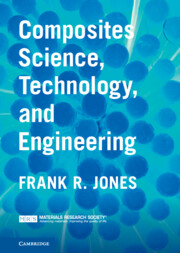Book contents
- Composites Science, Technology, and Engineering
- Composites Science, Technology, and Engineering
- Copyright page
- Contents
- Preface
- 1 Introduction
- 2 Fibres and Particulate Reinforcements
- 3 Matrices
- 4 Composites Fabrication
- 5 Mechanical Properties of Composite Materials
- 6 Mechanical Properties of Laminates
- 7 Fatigue Loading of Laminates
- 8 Environmental Effects
- 9 Joining, Repair, Self-Healing, and Recycling of Composites
- 10 Case Histories
- Index
- References
5 - Mechanical Properties of Composite Materials
Published online by Cambridge University Press: 14 April 2022
- Composites Science, Technology, and Engineering
- Composites Science, Technology, and Engineering
- Copyright page
- Contents
- Preface
- 1 Introduction
- 2 Fibres and Particulate Reinforcements
- 3 Matrices
- 4 Composites Fabrication
- 5 Mechanical Properties of Composite Materials
- 6 Mechanical Properties of Laminates
- 7 Fatigue Loading of Laminates
- 8 Environmental Effects
- 9 Joining, Repair, Self-Healing, and Recycling of Composites
- 10 Case Histories
- Index
- References
Summary
This chapter describes the mechanical performance of a fibre composite. A number of variables that control deformation and fracture are discussed: continuous or discontinuous fibres; fibre angle; fibre length; the transfer of stress between matrix and fibre at a short fibre and/or a fibre-break; and the role of the matrix. Individual components can fracture independently and control the micromechanics; the redistribution of stress after these events is discussed.
- Type
- Chapter
- Information
- Composites Science, Technology, and Engineering , pp. 160 - 209Publisher: Cambridge University PressPrint publication year: 2022



